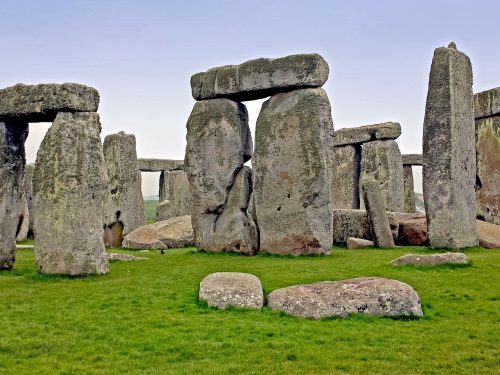 How To Visit Stonehenge and What To See When You Go
How To Visit Stonehenge and What To See When You Go
The world-famous, mysterious, prehistoric stone circle monument that is Stonehenge is a must for most people traveling to the U.K. It’s shrouded in…
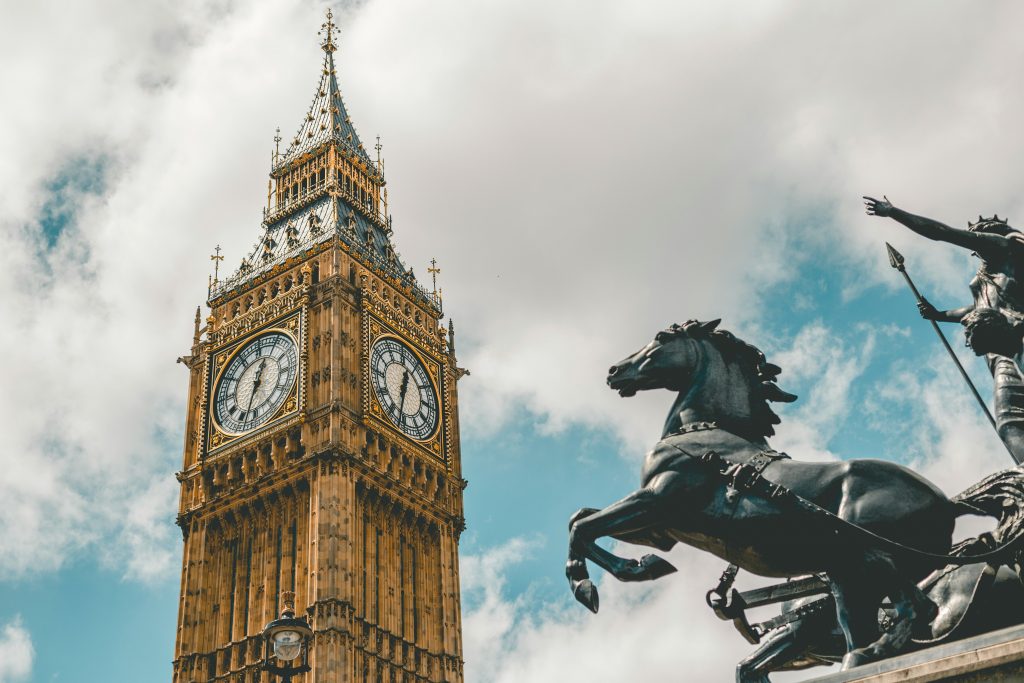
The pressure to plan an unforgettable trip to London can be overwhelming, especially if it’s your first visit.
From Buckingham Palace to St. Paul’s Cathedral, London’s landmarks are some of the most iconic in the world thanks to films like “Harry Potter,” the popular Netflix series “The Crown,” and global broadcasts of royal weddings and coronations.
What’s interesting about the attractions tourists most want to visit is that they’re either really old or modern. Take Westminster Abbey, which dates back to 960 AD and now welcomes over one million visitors a year. Compare that to the London Eye, a landmark built to celebrate the new millennium in 1999 — it also happens to be one of the highest-earning tourist attractions in the world.
But there are more London landmarks than there are hours in a day, so you won’t be able to see them all no matter how hard you try. That’s why we’ve compiled this list of the most famous landmarks to visit on your first trip to the Big Smoke. Consider it your guide to finding tickets, booking tours, and anything else you need to know before you go.
A note for travelers: We’ve chosen these London tourist attractions to make your first time in the city unforgettable, so you might not feel like you’re experiencing it like a local. All the tours we recommend in this guide are led by local experts, though, so you’re sure to get insider knowledge about what the real London looks like.
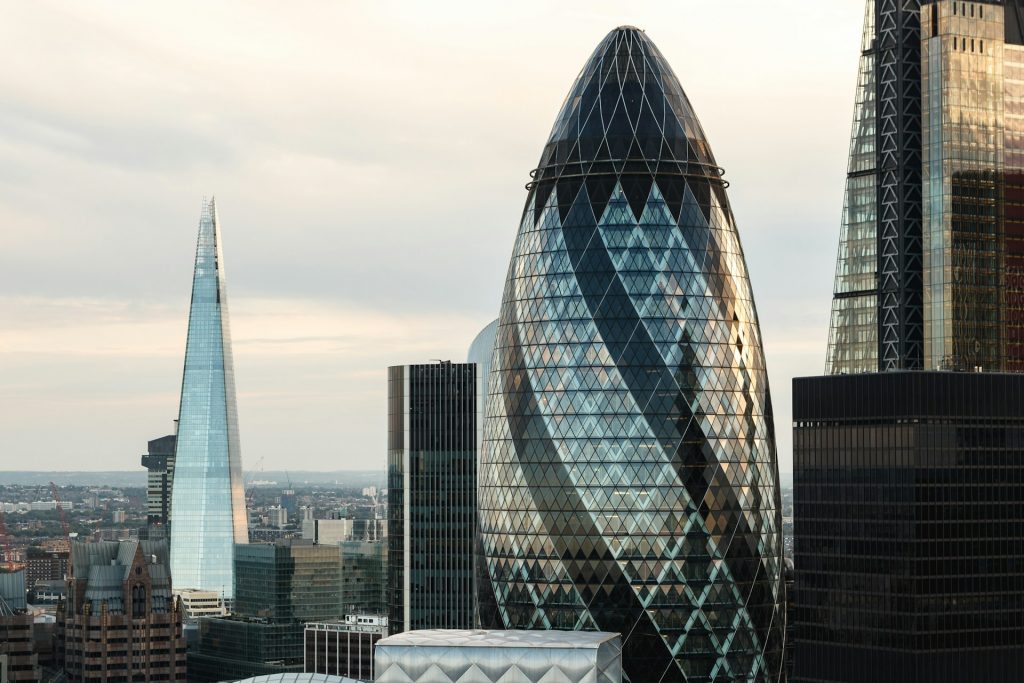
Before we dive into our list of the top 10 London landmarks to visit, let’s talk about why they make this vibrant city so iconic.
With a rich history that dates back to at least the Romans and a multicultural vibe that comes from its many immigrant communities, you’ll discover that there are lots of different Londons to enjoy — all you have to do is turn a street corner or get off at a different metro stop.
Of course royal London landmarks top travelers’ sightseeing itineraries. Honestly, you could spend your entire trip tracing the history of England’s monarchy throughout the ages and learning about the role the royal family still plays today.
You won’t want to miss Buckingham Palace, the official royal residence of the reigning monarch, in all its lavish glory. Surrounded by the pretty St. James’s Park and Green Park, you’ll marvel at the magnificent 775-room palace each time you pass it. During the summer, you can book tickets to visit the 19 State Rooms that are open to the public and even set up an exclusive tour on select dates. While you’re there, stop by The King’s Gallery (formerly The Queen’s Gallery) to see the changing exhibitions from the Royal Collection.
But Buckingham Palace wasn’t always where the Kings and Queens of England called home. Before the reign of Queen Victoria, St. James’ Palace was the official royal residence. It remains an important site for receptions and ceremonies, and you can learn more about both these palaces on our St. James’ Palace and Buckingham Palace Tour.
You can’t say you’ve seen royal London without marveling at the Crown Jewels in the Tower of London, walking across Tower Bridge to the picturesque St. Katharine’s Dock, and standing where Kings and Queens have been crowned at Westminster Abbey. And if you have time for day trips outside of London, you can visit the royal attractions Windsor Castle, Kensington Palace, and Hampton Court Palace.
London has one of the world’s most recognizable skylines with the dome of St. Paul’s Cathedral and the Elizabeth Tower and Big Ben towering over the city. A newer addition to the skyline is the London Eye, a huge ferris wheel in the South Bank that’s been giving locals and visitors spectacular views of the city since 1999.
Fun fact: Locals want you to know that Big Ben is not the clock tower, but the name of the largest of five bells inside of what is known as the Elizabeth Tower.
At night, you’ll be amazed by how pretty the Houses of Parliament look when they light up. The building is impressive to see during the day, but gains a romantic quality with that golden glow — so romantic that you’ll often find couples snapping pictures on Westminster Bridge, using the building as a background.
The most famous landmarks in London reflect its cultural history. No site reflects this history more than Trafalgar Square, a public space in Central London created to commemorate the Battle of Trafalgar during the Napoleonic Wars. Today, it’s the site of political demonstrations, music and dance performances, the National Gallery and National Portrait Gallery, and so much more.
Any sightseeing itinerary of cultural London has to include wandering through the Tate Gallery, seeing a show at Shakespeare’s Globe, visiting the British Library, and even trying to stop at all the pubs where literary greats like Shakespeare and Samuel Johnson dined.
Whichever London you choose to see (or if you have time to see them all), our list of London landmarks will help you plan your trip. And if you’re short on time, booking one or two London tours is a great way to get an overview of the best attractions from a local guide.
Let’s learn more about the top 10.
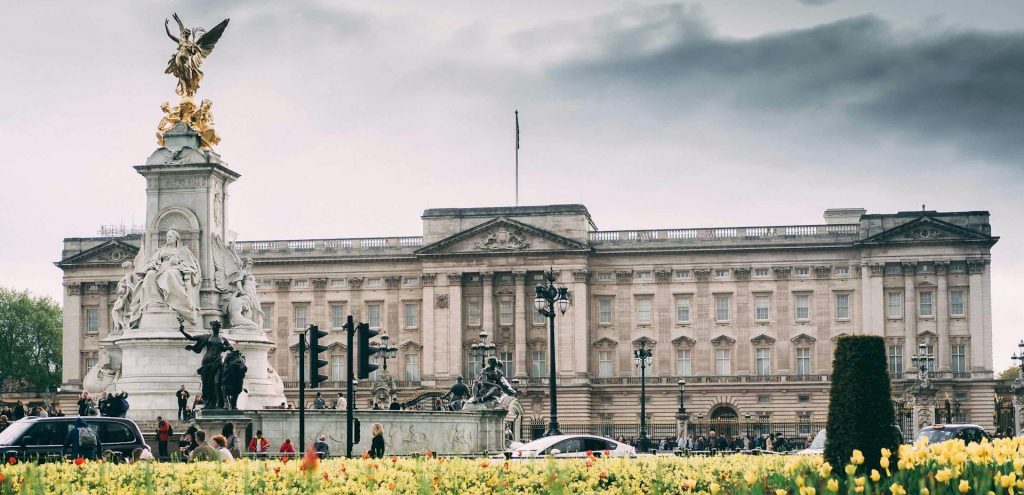
How to get there: Take the metro to Green Park Station, then walk about 6 minutes. You can also take a bus to the Wilton Street stop and walk about 5 minutes.
How much it costs: For the summer opening of the State Rooms, tickets for standard admission start at £32 for adults.
How much time you need: An exclusive guided tour takes 1.5 hours, and there’s a timed admission system for all other tickets. You can find more information about visiting Buckingham Palace on the official website.
Located in Westminster, Buckingham Palace is the official London residence and headquarters of the British monarch. Queen Victoria was the first royal to live there in 1837, and since then it’s been one of the most iconic London landmarks.
Buckingham Palace has 775 rooms, and 19 of those are State Rooms for events that you can visit when they’re open to the public in the summer. The palace operates like its own community, with members of the royal family and staff living and working together.
Fun fact: Want to know if the Sovereign is in? Look at the flag! If the Royal Standard flag is raised, then the king or queen is in the palace.
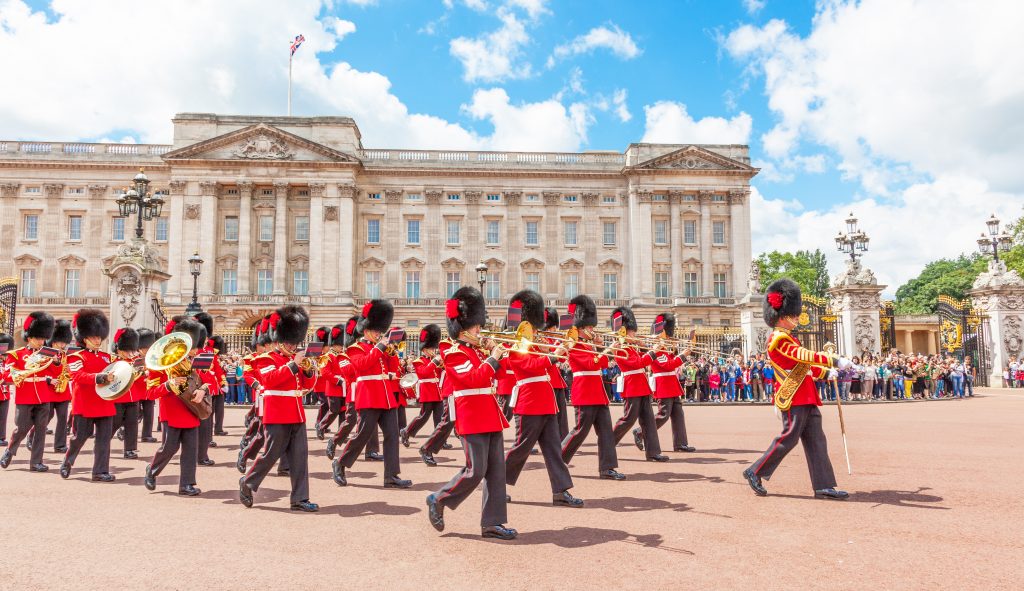
Tip to make it unforgettable: Be sure to catch the Changing of the Guard ceremony that happens every day in June and July, and on Monday, Wednesday, Friday, and Sunday between August and May. It’s when the soldiers currently on duty at Buckingham Palace are formally relieved by the new guard, and not without some pomp and circumstance. The handover involves a parade, marching band, and horse guards carrying the Union Jack.
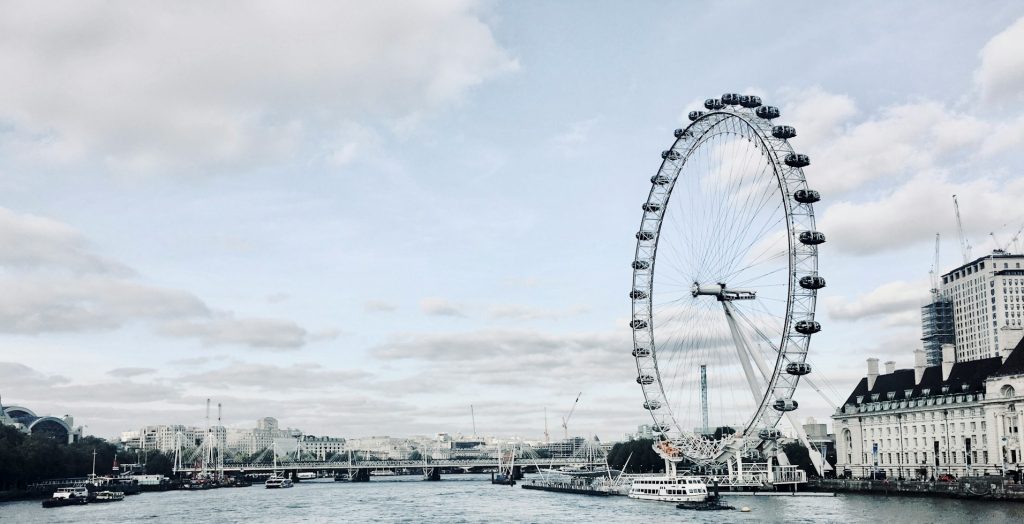
How to get there: Take the metro to Waterloo station, then walk about 10 minutes. Since you’re right by the Thames River, why not cruise to the London Eye by boat? The River Bus service and Thames Clippers will both get you to London Eye Pier.
How much it costs: A standard ticket starts at £30 for adults.
How much time you need: You’ll get to spend 30 minutes experiencing panoramic views from 440 feet above the city.
The design for the London Eye was the winner of a newspaper competition held to find a modern landmark to mark the new Millennium — that’s why it’s sometimes called the Millennium Wheel. Since it opened on London’s Southbank in 1999, it has become one of the most iconic attractions that make up the city’s skyline. It’s open throughout the year, and tickets can be purchased ahead or on the day (but it’s cheaper to book ahead).
But what, exactly, is there to do on the London Eye? Look out at the city below, of course, which is easy to do, given that it only moves about 10 inches per second.
Fun fact: There are 32 numbered capsules or pods to represent London’s boroughs, but they skipped 13 out of superstition.
Tip to make it unforgettable: While the views are breathtaking during the day, you’ll see the city lit up if you ride the London Eye at night — a nice activity for a romantic night out.
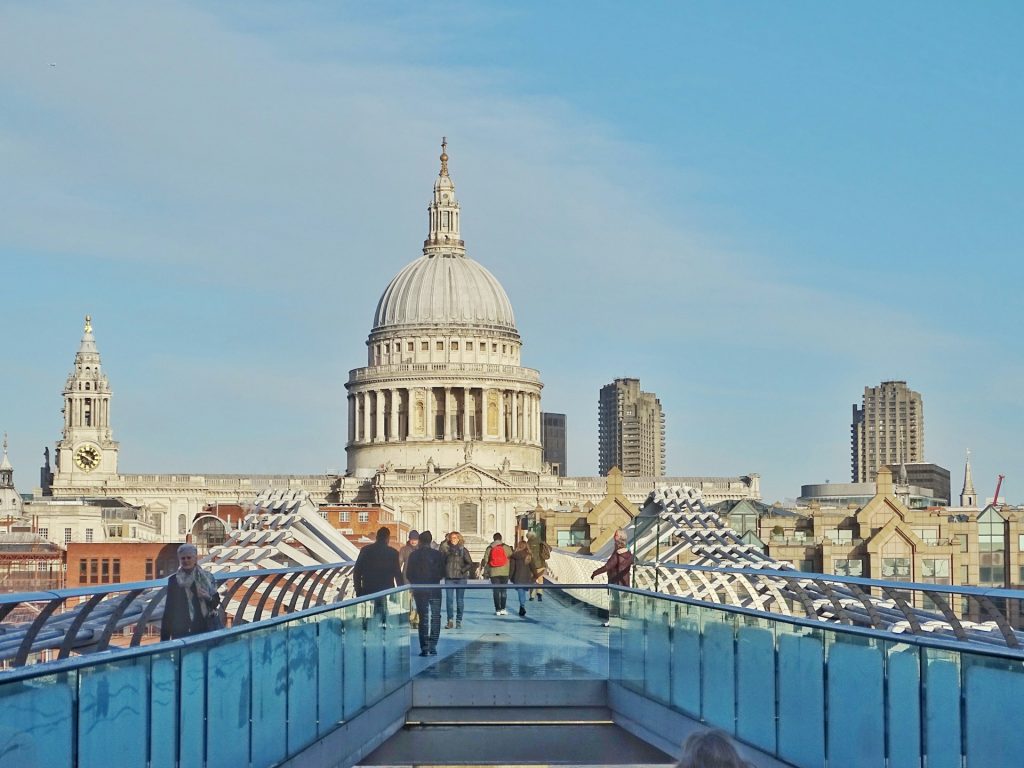
How to get there: The Central Line on the metro will take you to St. Paul station. There are also plenty of buses that will get you close to the Cathedral.
How much it costs: Tickets for adults start at £25, and that includes the Cathedral floor, Crypt, and Dome galleries.
How much time you need: Give yourself at least 2 hours to see everything included with the cost of your ticket.
From Royal Jubilees to state funerals, St. Paul’s Cathedral has hosted many momentous events in British history. The Anglican Cathedral is the seat of the Bishop of London, and it happens to be the fifth church to stand on this site.
We can think about the history of St. Paul’s in three stages: pre-Norman, old St. Paul’s, and present St. Paul’s. All three stages have included fire, the biggest one being the Great Fire of London in 1666. It completely destroyed old St. Paul’s Cathedral, after it had finally been rebuilt in 1240. The new cathedral — what is now present St. Paul’s — was entrusted to the architect Christopher Wren, who proposed building it in an elaborate English baroque style.
The most iconic feature of St. Paul’s is its majestic dome that rises over the city at 365 feet. Wren might have been inspired by Michelangelo’s dome at St. Peter’s Basilica, but his uniquely has two stories of masonry with a continuous colonnade (known as “peristyle”). On the inside, the dome is just as awe-inspiring, as it spans the nave and aisles located under it. If you’re feeling up to the challenge, you can climb the 528 steps within the dome to visit the Cathedral’s Whispering Gallery, Stone Gallery, and Gold Gallery, as well as the ball and lantern that sit at the very top.
Fun fact: St. Paul’s has a long history of inviting champions of social justice to speak at the Cathedral. In 1964, Dr. Martin Luther King, Jr., delivered a sermon while he was on his way to collect his Nobel Peace Prize in Norway.
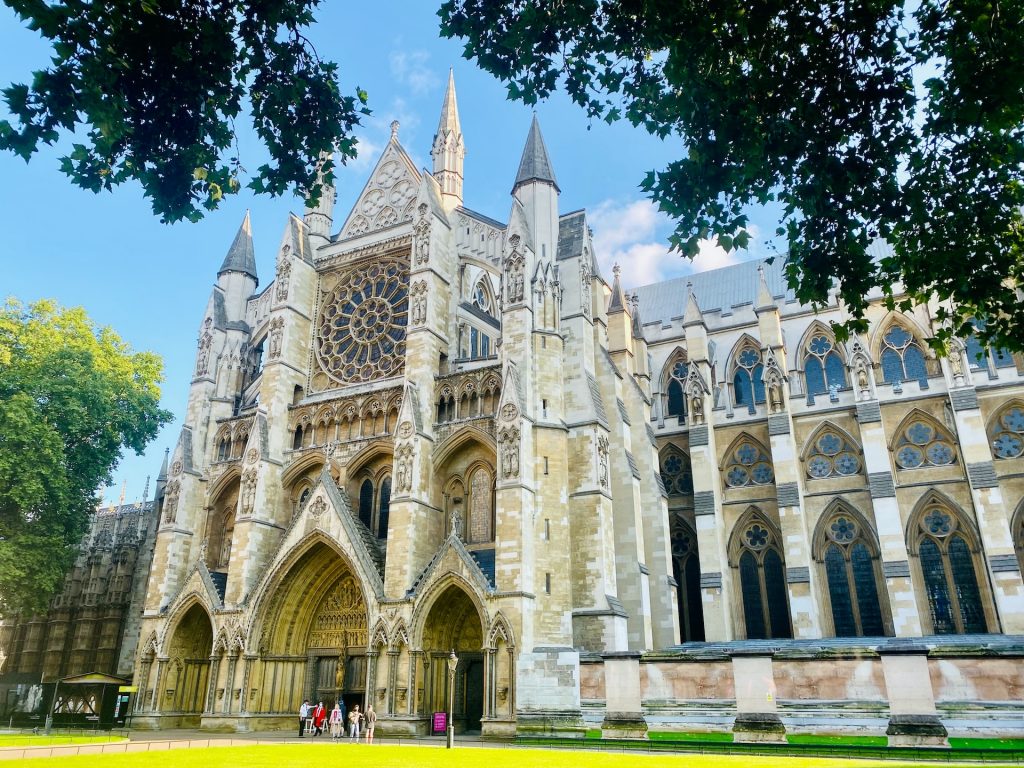
How to get there: The nearest metro stations are Westminster and St. James Park. There are also bus routes that will drop you off directly in front of the abbey.
How much it costs: General admission tickets start at £29 for adults, and you can pay an additional £10 for a guided tour. These tours run Monday-Saturday and space is limited, so be sure to book ahead.
How much time you need: A guided tour lasts 1.5 hours, and you’ll need at least that much time if you decide to go through Westminster Abbey on your own.
The world recognizes Westminster Abbey as the site of royal weddings and coronations due to their global TV coverage. While the abbey attracts over a million visitors of all faiths each year, it still runs regular church services for the public to attend.
Westminster Abbey has a long connection with British royalty as the site where every monarch has been crowned since 1066. The church we see today in the Gothic style was built in 1245 after Henry III demolished what King Edward had erected on the site around 1040. It was known as “west minster,” then, to distinguish it from St. Paul’s Cathedral.
The abbey is considered a work of architectural genius. The Lady Chapel, in particular, has a fan-vaulted ceiling that’s a marvel of medieval architecture, and stained glass windows that date back to the 13th century. British artist David Hockney even designed a window in 2018 to commemorate the reign of the late Queen Elizabeth II.
Fun fact: Not only kings and queens are buried in Westminster Abbey. Geoffrey Chaucer was the first poet to be buried there in 1400, and Charles Dickens was buried there, reportedly, against his wishes.
Tip to make it unforgettable: Attend one of Westminster Abbey’s scheduled services that are free and open to the public. You’ll not only get to see this popular London landmark, but experience it as a church. Find the schedule for weekly services on their website.
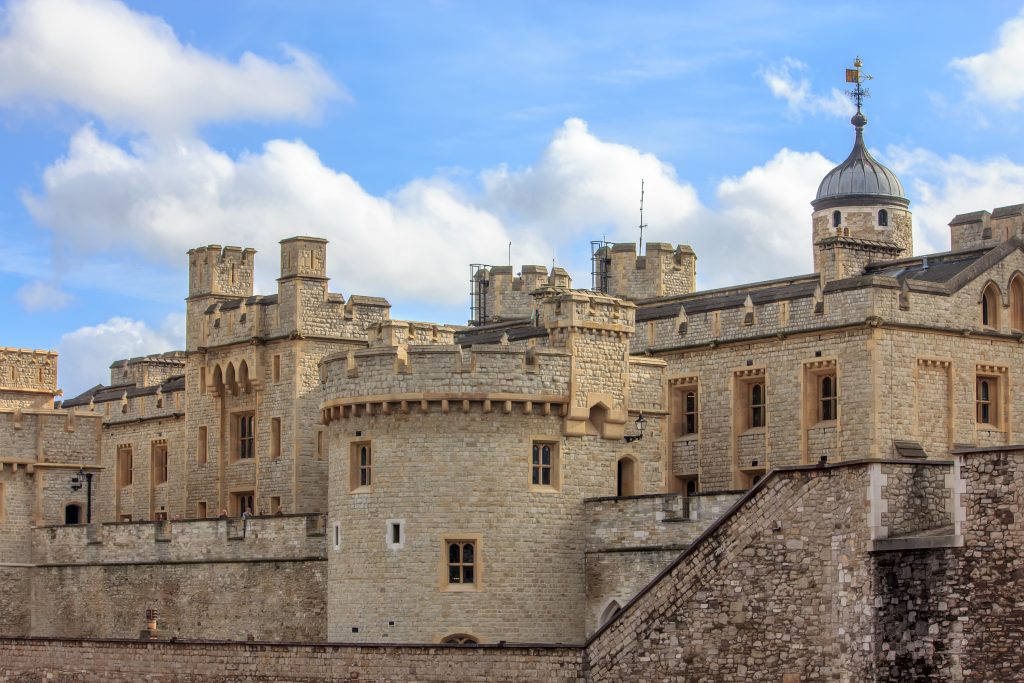
How to get there: Get off at Tower Hill station if you’re taking the metro, or take one of the bus lines to that stop.
How much it costs: An adult ticket starts at £34.80 and includes entry to the Crown Jewels, all the towers, and museums and exhibitions. Since the Tower of London is maintained by Historic Royal Palaces, a self-funding charity, there’s an option to add a 10% donation to your ticket price.
How much time you need: 2-3 hours are recommended
The Tower of London might be the most fun of all London landmarks. This fortress once served as a royal palace, political prison, torture chamber, royal mint, and even a public records office. Today, it’s famously known as the home of the Crown Jewels, but there’s more to see than pretty jewels.
The most famous castle keep is the White Tower, which today houses the Royal Armouries and an original executioner’s block on the top floor. Guy Fawkes is also believed to have been held prisoner in the tower’s basement before he was executed for conspiring to kill James I in the Gunpowder Plot.
In the Bloody Tower, you’ll learn what it was like to be held as a political prisoner here. See the tower’s portcullis up close, hear how Sir Walter Raleigh endured 13 years as a prisoner during Elizabeth I’s reign, and visit Raleigh’s garden that continues to grow plants that he used in his remedies.
Fun fact: If you happen to see ravens flying around, don’t get scared — these intelligent birds are guardians of the Tower of London, all because of a legend that says the kingdom and the tower will fall if the six ravens leave.
Tip to make it unforgettable: Yeoman Warders, also known as Beefeaters, offer guided tours every 30 minutes that are included with your ticket. You’ll hear tales of prisoners, torture, and execution from members of the Royal Bodyguard.
How to get there: Take the metro and get off at Tower Hill, the closest station to the dock.
How much it costs: St. Katharine’s Dock is a marina that’s free to wander around.
How much time you need: Spend as much or as little time as you need to see everything you want.
Once you’ve finished learning about the bloody history of the Tower of London, head over to St. Katharine’s Dock for a waterfront walking tour. Central London’s only marina is a popular attraction for dining and shopping, viewing historic warehouses, and envying luxurious yachts.
Fun fact: St. Katharine’s Dock first opened in 1828 and was known for dealing with luxury goods like sugar, rum, spices, and perfume. Today, you can find many popular stores that carry those items.
Tip to make it unforgettable: Take a well-deserved rest in the middle of your day of sightseeing to shop and eat lunch.
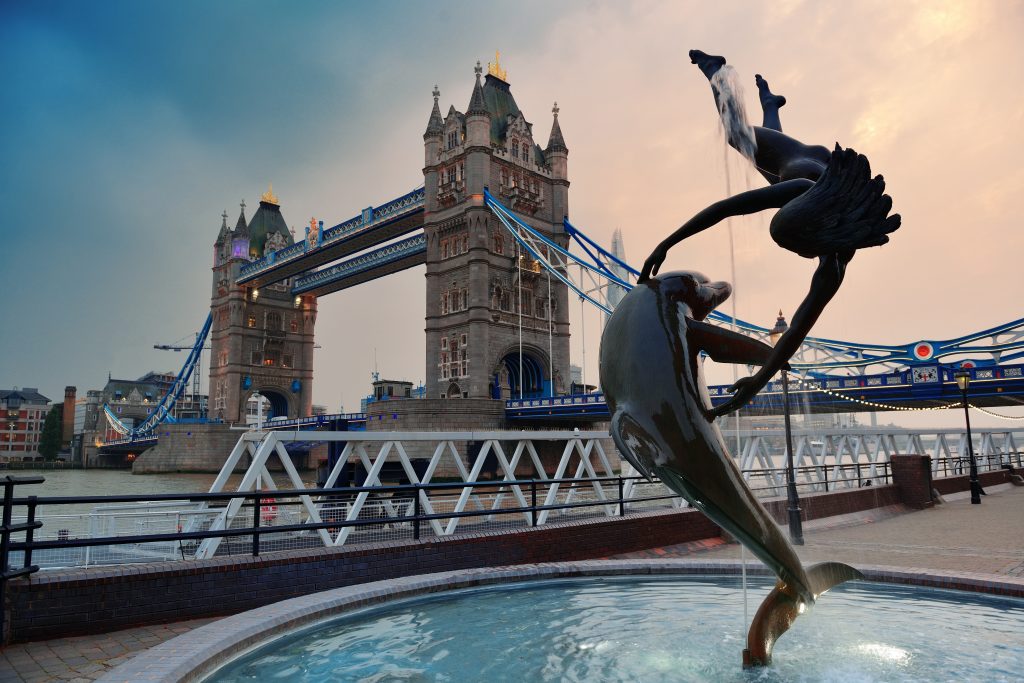
How to get there: Take the metro to Tower Hill. Fancy a boat ride? Cruise along the Thames on a riverboat to Tower Pier.
How much it costs: Tower Bridge is free to walk across, connecting the Tower Hamlets and Southwark boroughs. You can also go inside the bridge to get panoramic views of the Thames below. Tickets for adults start at £13, and you can even take a 1.5-hour guided tour for about £30.
How much time you need: Just walking across can take 20-30 minutes, but you should plan to spend around 2 hours inside.
Tower Bridge with its castle-like towers is so symbolic of London that you often see it featured on postcards. However, many people mistake it for London Bridge, probably because it’s more decorative than the actual London Bridge.
But London Bridge is actually the oldest river crossing in the city — despite being rebuilt many times — while Tower Bridge didn’t make an appearance until 1894. There was a need to have another river crossing, and Queen Victoria asked to have it built to match the Tower of London.
Tower Bridge is known as a bascule bridge — “bascule” is French for “seesaw” — which means that hydraulics power its engines to lift both sides of the bridge.
What’s cool is that you can go inside the towers and marvel at the London skyline from its windows and glass floors. You’ll also get to see the original Victorian steam engines on display in the engine rooms.
Fun fact: There’s a myth that in 1967 an American entrepreneur named Robert Paxton McCulloch accidentally purchased a dismantled London Bridge when he thought he was getting the Tower Bridge. The truth is that McCulloch always intended to buy London Bridge.
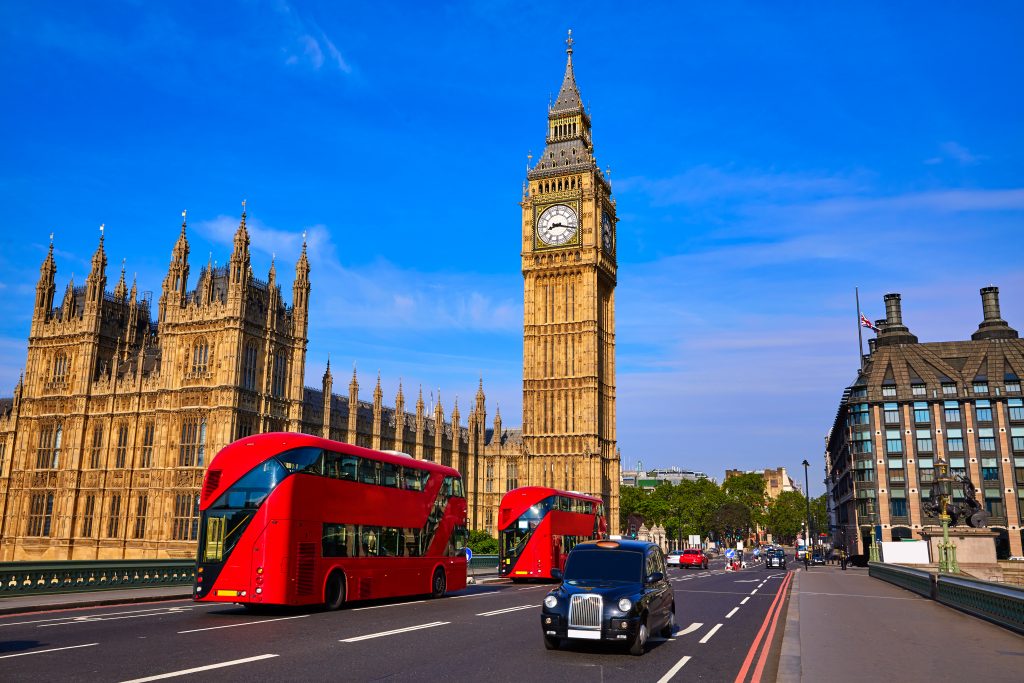
How to get there: You can take the metro to Westminster station, or ride the bus to either Parliament Square in Victoria Street or Trafalgar Square in Whitehall.
How much it costs: There are different tour options that you can find on the UK Parliament website, but ticket prices tend to vary.
How much time you need: Give yourself at least 2 hours to tour the Houses of Parliament.
Also known as the Palace of Westminster, the Houses of Parliament are made up of the House of Commons, the House of Lords, and Westminster Hall. You’ll also find another iconic London landmark you might have heard of — Big Ben.
With a guided tour, you’ll get a behind-the-scenes look at the beating heart of British politics. The architecture is astonishing as it was originally built to be a palace during the reign of King Henry VIII, and inside you’ll find plaques commemorating famous trials of figures like Guy Fawkes.
Fun fact: After the Great Fire of London destroyed the first Palace of Westminster in 1834, architect Charles Barry’s design for a Gothic-style palace won a competition and is the structure we see today.
Tip to make it unforgettable: If you happen to be in London when Parliament’s in session, you might be able to attend a committee hearing or debate. Debates are free to watch from the Public Galleries, but check the website ahead of time for ticket information and debate schedules.
How to get there: The closest metro stations to St. James’s Palace are Green Park and Charing Cross.
How much it costs: St. James’s Palace technically isn’t open to the public, but you can view it from the outside and enjoy a visit to the Chapel Royal, a beautiful active church that’s often used for royal weddings and christenings.
How much time you need: 30 minutes is enough time to view the palace and chapel.
Built by King Henry VIII, St. James’s Palace was the official residence of the sovereign until Queen Victoria moved into Buckingham Palace in 1837. It has since been an important site for royal events like Victoria and Albert’s marriage in 1840 and Prince George’s christening in 2013— both events took place in the Chapel Royal.
Today, the palace is used for official receptions and is home to Princesses Beatrice, Eugenie, and Alexandra. On our Royal London Walking Tour, your local guide will share stories about the importance this palace has long held for Britain’s monarch.
Fun fact: Each year, St. James’s Palace hosts up to 100 receptions for charities that are associated with the royal family.
Tip to make it unforgettable: Get to the palace at 10:30 a.m. to watch the inspection of a detachment of the Old Guard before they march to Buckingham Palace to be relieved in the Changing of the Guard ceremony.
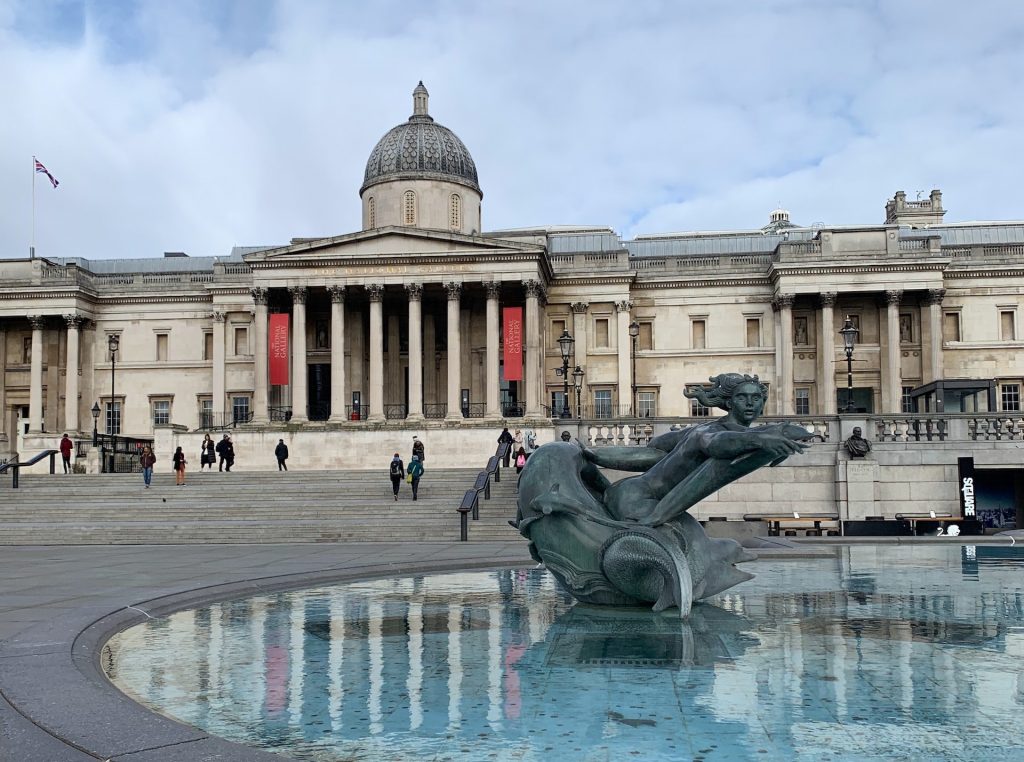
How to get there: Charing Cross is the closest metro station and has an exit for Trafalgar Square.
How much it costs: Free
How much time you need: The amount of time you spend in Trafalgar Square depends on what you want to see and do.
Famous for Nelson’s Column, the National Gallery, and as the gathering place for demonstrations and celebrations — the end of World War II was celebrated here — Trafalgar Square has a vibrant atmosphere that attracts tourists and locals alike.
With its many fountains and statues, this public square is a wonderful place for photos. It’s also known as a site of protest for Londoners, not just a pretty meeting place.
Its history goes back to the Napoleonic Wars and the Battle of Trafalgar in 1805, when the British successfully defeated French and Spanish vessels despite being outnumbered. The British Navy was led by Admiral Horatio Nelson who died in that battle despite Britain’s victory, and Trafalgar Square and Nelson’s column were both erected to commemorate the battle.
Fun fact: Trafalgar Square is home to Britain’s smallest police station, located in a lamppost. It was installed in the 1920s to make it easy for officers to monitor what was happening in the area.
Tip to make it unforgettable: Check out the fourth plinth to see interesting sculptures from contemporary artists. It’s considered one of the world’s most famous art commissions and is a great way to bring new art to the public.
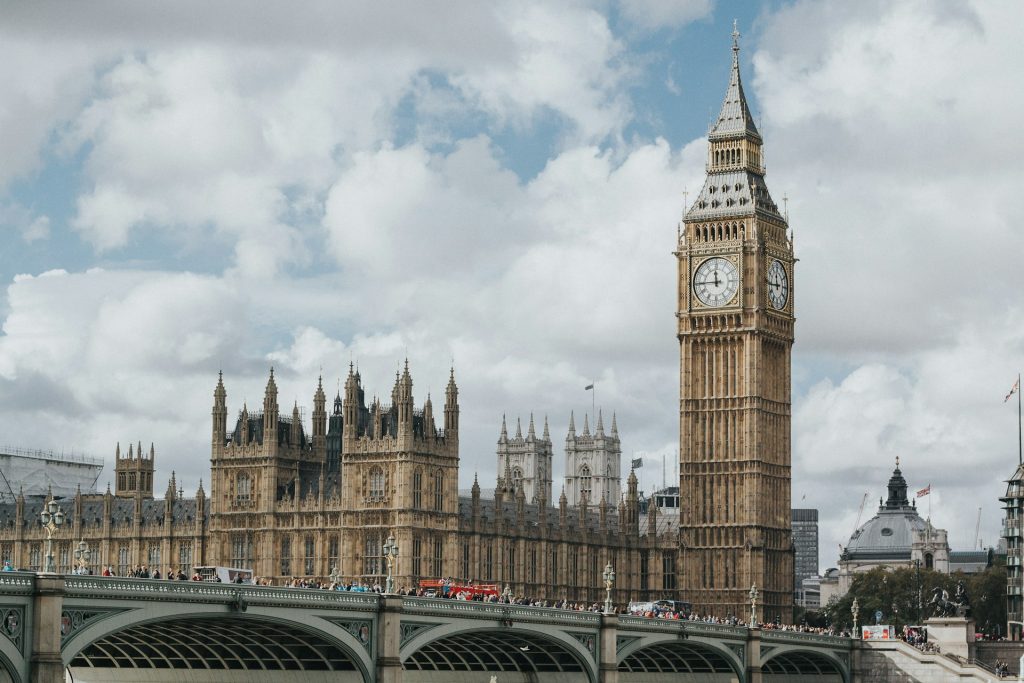
The key to sightseeing in London like a pro is having a plan for how you’ll get to all the attractions you want to see. Now that you’ve got a list of the best London landmarks, use these tips to make the most of your trip.
Book your tickets for the landmarks you want to visit online if you can, since it’s often cheaper than buying them on site (usually just a few pounds cheaper, but you can put that money toward your morning flat white). This might also save you the disappointment of getting to an attraction and finding that tickets for the day have all sold out.
The London queue is probably a cultural phenomenon you’re not excited to experience. And during peak tourist season in the spring and summer, they can get pretty lengthy for popular landmarks. Instead of getting up early to try to beat the crowds, do some of your sightseeing at night when everyone is heading to dinner. Not only does the city literally light up at night, but many attractions like museums offer late access. Making dinner reservations, buying tickets online, and booking skip-the-line tours are also great ways to get around the crowds.
If it’s your first trip to London, joining a guided tour is a great way to get to know the city. Your guide will not only show you the highlights but also give you tips on the best way to get around, how to avoid tourist traps, where to get the best fish and chips, and more. And if your timing is limited, you need someone who can help you make the most of your time.
London has plenty of transportation options, but be sure to check an app like Google Maps or Citymapper to see how much time getting from point A to point B will actually take — the metro is not always faster! And sometimes it’s better to take the bus if you want to see more of the city, or to walk if you want to get a feel for the vibe of the city. Choosing attractions that are close to each other for a day of sightseeing will also ensure you’re saving time on traveling.
No matter which London landmark you’re visiting, find a way to experience it in a new way. This could mean engaging with an interactive exhibit at a museum, asking a local for directions, or getting a panoramic view of the city from high up.
All that’s left to do is get out there and explore. Whether you want to see royal London, immerse yourself in cultural London, take in the breathtaking views of skyline London, or a combination of all three, our tips will help you make an itinerary for an unforgettable journey.
There’s no reason to plan every part of your trip alone. With our London tours, you’ll have expert guides showing you the city’s iconic landmarks so you can kick back, relax, and enjoy a truly immersive experience.
 How To Visit Stonehenge and What To See When You Go
How To Visit Stonehenge and What To See When You Go
The world-famous, mysterious, prehistoric stone circle monument that is Stonehenge is a must for most people traveling to the U.K. It’s shrouded in…
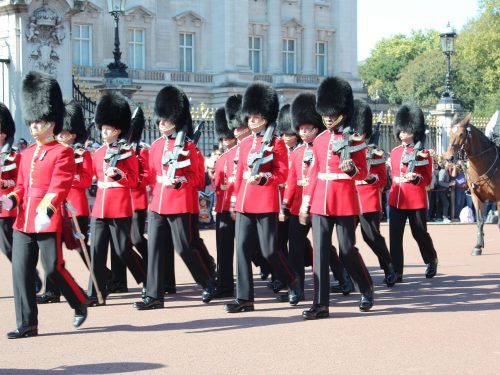 Where To See the Changing of the Guard in England
Where To See the Changing of the Guard in England
You can’t get more English or more royal than the Changing of the Guard. It’s a spectacular event full of tradition and history,…
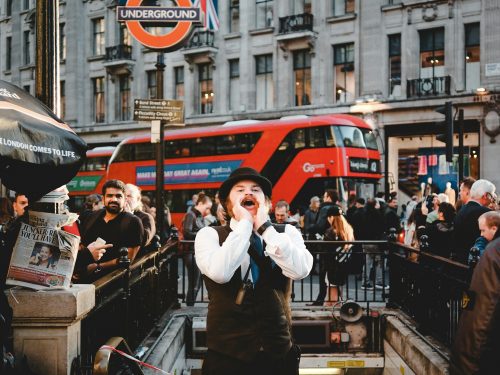 Meet the Real London: Locals Debunk 10 Myths About London
Meet the Real London: Locals Debunk 10 Myths About London
When it comes to myths about London, locals often say the same ones (no, it’s not always gray and rainy here), but there…